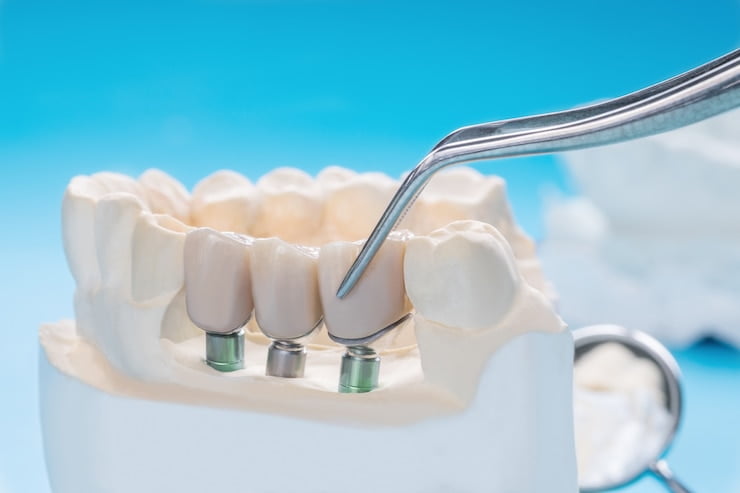
They are an excellent option to replace missing teeth, but they can also come loose. There are several reasons that they can come loose, including poor oral hygiene, failure to clean around the implant, or poor-quality bone.
In some instances, implant-supported teeth can even be overloaded, so proper maintenance and cleaning are necessary.
In addition, they can become damaged or fall out if they are not carefully monitored. According to the Nuvia Smiles blog, depending on your specific needs and goals, your dentist can recommend the right implant type for you.
A procedure to place a dental implant may be performed under local anesthesia or IV sedation, so patients can choose the right option for them.
There is typically minimal discomfort following the procedure. Non-sedated patients can return home immediately, and patients who receive sedation are usually comfortable. Non-narcotic medications can help relieve postoperative discomfort.
They can also be used to repair damaged teeth or address other underlying oral health issues. Several treatment options are available.
Once the gums heal, a minor surgical procedure is performed to attach an abutment and a temporary restoration. Endosteal teeth, on the other hand, are placed directly on the jawbone.
These types of teeth are typically used as alternatives to bridges. Some types of endosseous teeth are cylinder-shaped, while others are bladed.
The All-on-4 method, for example, requires only four false teeth and is a good option for people who have lost a significant amount of bone.
The All-on4 implant option (https://en.wikipedia.org/All-on-4), on the other hand, is ideal for patients who want a fixed-hybrid prosthesis with a fixed bridge supported by eight false teeth and resembles natural teeth. There are several benefits of each option so discuss them with your doctor.
Complications

Although the chances of developing a dental implant infection are extremely low, they can still occur. The most common risk for infection is the spread of infection to another area of the mouth. Getting a medical check-up before having the procedure is vital to minimizing the risk of infection.
Infections caused by bacteria can affect the entire body, so it is important to get a proper diagnosis before undergoing the procedure.
Infections are usually treatable with antibiotics, but patients who have certain medical conditions are at risk of developing complications. Another common dental implant complication is the failure of the implant to bond with the jawbone.
For them to be successful, they must be able to fuse with the jawbone over several months. However, there are many reasons why this process may fail. Infection can also occur if an implant is too loose.
In this case, the patient should get it fixed immediately to avoid further complications. Immediately following surgery, dental implant patients may experience some pain.
This pain can be treated with over-the-counter pain medications. If pain persists for more than a week, patients should consult their dentist or dental implant surgeon.
If the pain continues after the procedure, it may be a sign of an infection. While complications are uncommon, patients should expect some soreness for one to four weeks after the procedure.
Some patients may experience some restrictions in what they eat and the exercises they can do. During the procedure, a dentist may also encounter complications.
These include failure of integration of the teeth and infections at the surgery site. Some of these complications can be avoided by following the dentist’s instructions.
The most common of these complications is lack of integration. Infections at the surgery site are another common problem.
Patients should consult with their dentists and follow their recommendations regarding loading and unloading. If there is an infection, a dentist will discuss the risks of the procedure with them.
Anesthesia Options

There are several types of anesthesia for placement. Local anesthetics are effective for less invasive procedures, but a general anesthetic is an excellent choice for more complex ones.
General anesthesia will keep you relaxed throughout the entire procedure, so you can even take a nap during the operation! Depending on the type of procedure you are having, you may need both types of anesthesia.
While local anesthetic is effective for single teeth, more complex surgeries involving bone grafting will require general anesthesia. If local anesthesia is not enough, conscious sedation may be a better option.
Your dentist may give you a pill or use nitrous oxide to keep you relaxed during the procedure. If you are extremely nervous about the procedure, sedation may help.
However, if it is your first time having them, it is recommended to consult with your dentist about your sedation options and find out what is right for you. Another option for patients who are nervous about dental procedures is IV sedation, which is often used during dental implant procedures.
This type of anesthesia allows patients to enter a relaxed state during the procedure and will allow them to rest their teeth in a bite guard.
Patients who are relaxed will not clench or bite their bite guard instinctively, which will help them experience less pain during the procedure.
This type of anesthesia can also help those who have a history of bad dental experiences or who are physically or mentally challenged. Another type of anesthesia is nitrous oxide, which can be administered through a mask.
This type of anesthesia is effective for them, but it is not an ideal choice for patients who have severe lung or respiratory issues. This type of anesthesia is not recommended for patients who have severe lung disease or have a history of heart problems. It is an excellent option for patients who experience mild anxiety.
If you are worried about having them, however, nitrous oxide will make you feel more comfortable and relaxed during the procedure.
They require a substantial amount of bone structure in the jaw to be successful, but many adults do not have enough bone in the jaw. In these situations, bone grafting is often performed. This procedure helps to restore jawbone density and strength.
Read Also:




























